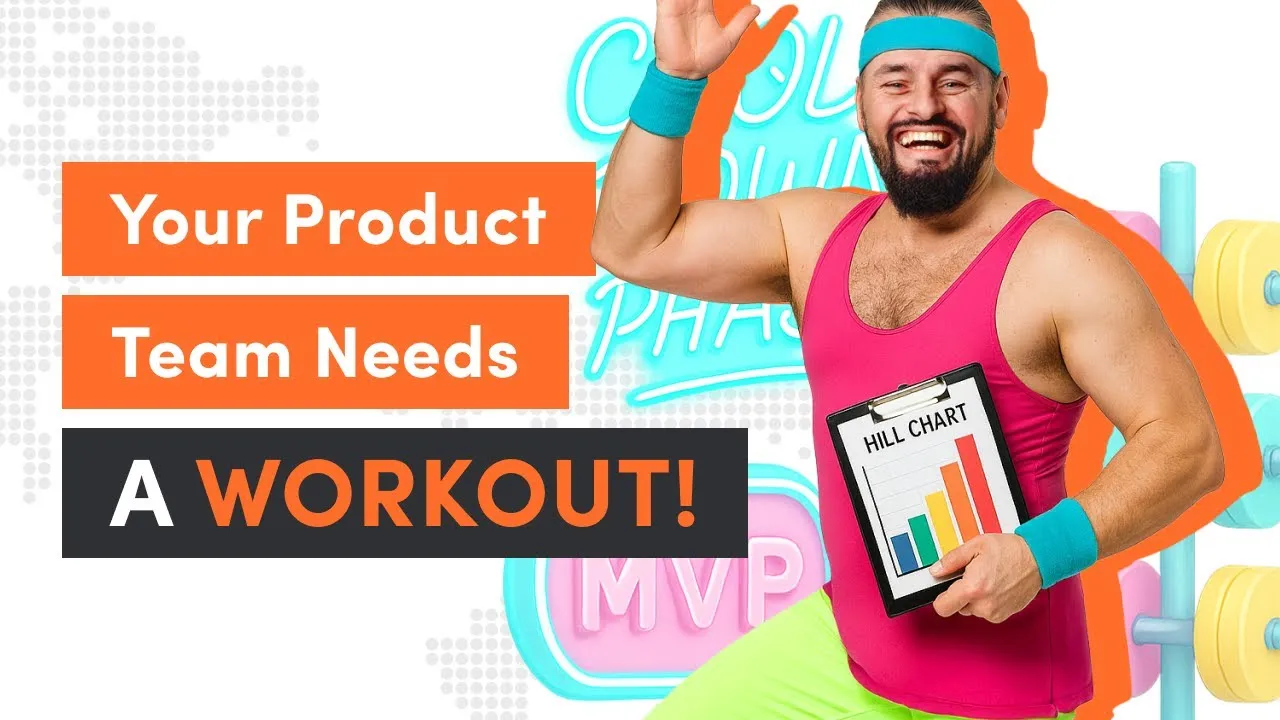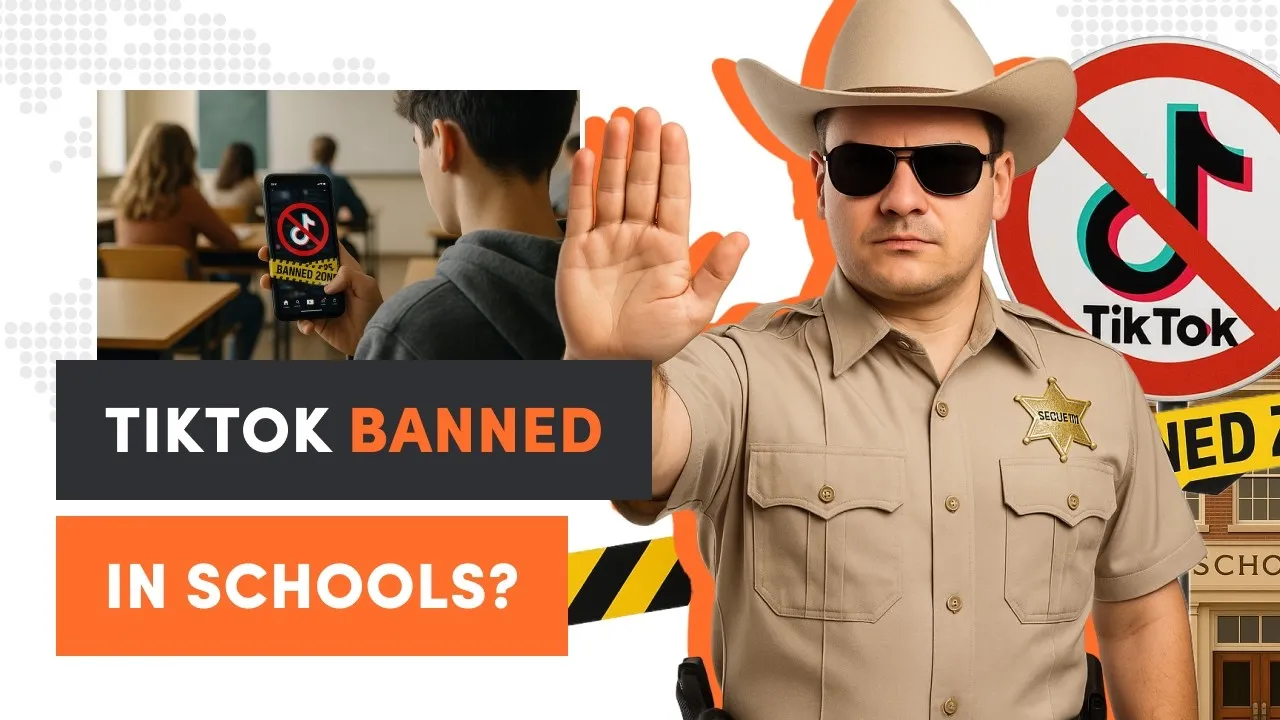What if your school day started with an AI tutor instead of a traditional lecture? At Alpha School in Austin, Texas, this futuristic model is already a reality, and the results are turning heads across the nation. With students now performing in the top 10% nationwide, the school credits its remarkable academic transformation to an AI-powered tutoring system that tailors lessons to each individual learner. But it’s not just about test scores. By freeing up time during the day, Alpha students also develop real-world skills such as:
- public speaking,
- financial literacy,
- and teamwork.
These skills demonstrate the real-world applications of AI in education, as technology helps bridge classroom learning with practical, everyday experiences.
This balance of personalized academic instruction and hands-on life education is reshaping what success looks like in modern classrooms. AI tools provide students with personalized support, immediate feedback, and access to diverse resources, further enhancing their learning journey. The Alpha School story offers a bold glimpse into how AI and teachers together can unlock a new era of education.
If you are interested in these topics, check out our project, which also has a built-in AI tutor, mentingo.com.
In this article, we will explore:
- How to help teachers avoid burnout?
- How can AI technology and gamification make learning more effective?
Intelligent tutoring systems (Get to know more about the Alpha School Success Story
Alpha School in Austin, Texas, has seen a huge boost in test scores. Students are now ranked in the top 10% nationwide. The school credits this success to a new AI tutor — an artificial intelligence tutoring system that teaches for two hours each day. During the rest of the school day, students work on other important skills.

Speaking on Fox and Friends, Alpha School co-founder McKenzie Price explained that using AI helps students learn not only faster but also better:
So we use an AI tutor and adaptive apps to provide a completely personalized learning experience for all of our students. And as a result, our students are learning faster. Uh, they’re learning way better. In fact, our classes are in the top 2% in the country. And what’s even better is the rest of the afternoons are spent doing life skill development.
The AI tutor also provides immediate feedback, helping students correct mistakes and understand concepts more quickly.
Why personalized education work?
The AI system offers a completely personalized learning path, giving teachers more time to focus on motivating their students and supporting them emotionally.
One student, high schooler L. Christine, pointed out that compared to traditional schools, where students can be overloaded with homework, most of the academic work at Alpha School is done in three-hour blocks. After that, students can follow their passion projects. Christine, for example, is developing a safe AI dating coach for teenagers:
I have an app. Okay? Answers any question about teen dating. I want to ask my crush out to prom in front of all of her friends. Is that a good idea?” “It really depends on her personality.”
Alpha School currently has a few hundred students, and its leaders plan to expand in other parts of the country. According to Price, the growing interest from parents shows how much people want personalized education and how teachers’ new role as mentors and emotional supporters is so important. Meanwhile, AI focuses on teaching the material in a way that fits each student’s needs.
Staying on the topic of AI assistance
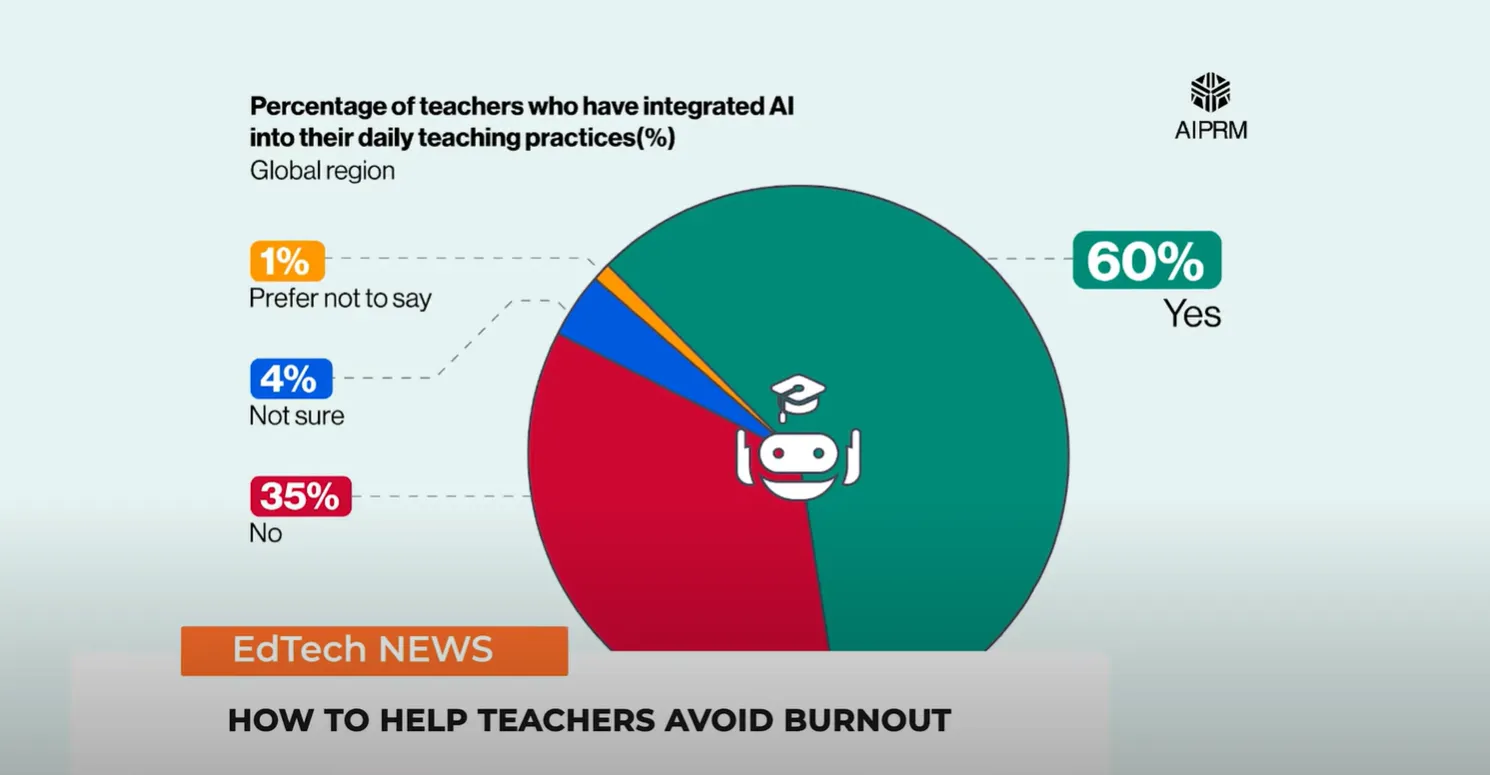
According to research by Impact Research, most teachers now regularly use AI chatbots and tools like ChatGPT. This is already our reality, which is great news because it shows that new technology is being adopted in education at a high rate. No wonder that the EdTech field is growing so quickly, offering more tools (Check which authoring tools for e-learning you should implement) every day.
AI in education - just a few examples in practice
So, what does that mean in practice? How can AI tools support teachers?
- By automatically creating lesson plans based on a topic, subject, and class level.
- By generating materials for students, including presentations and lesson outlines.
- By helping grade and comment on student work and create education documents.
All these things help teachers save time. That means they can focus more on improving how they teach and on truly engaging their students.
In the last two years alone, searches for tools that generate lesson plans have increased 50 times.
Try our developers.
Free for 2 weeks.
No risk. Just results. Get a feel for our process, speed, and quality — work with our developers for a trial sprint and see why global companies choose Selleo.
Let’s take a look at some specific possibilities
First up is Magic School AI, whose main goal is to reduce teacher burnout by supporting them in everyday tasks. The problem of burnout is serious, affecting nearly half of teachers in the US.
Challenges teachers face and how AI helps
Why is burnout so common, and what challenges do teachers face?
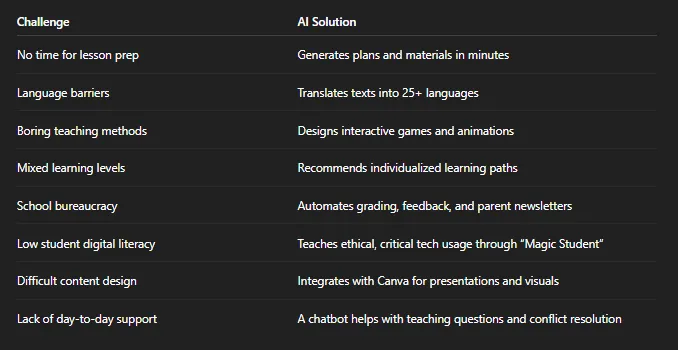
- Not enough time to prepare materials: Magic School AI can create lesson plans, tasks, and teaching aids in about a minute.
- Communication barriers in diverse classrooms: It can automatically translate text into over 25 languages.
- Boring teaching methods: It helps design interactive educational games and animations.
- Different students’ needs: It can suggest individual learning plans and tailored tasks for each student’s level.
- School bureaucracy: It generates grading rubrics, student feedback, and parent newsletters.
- Low digital skills in students: Its Magic Student feature teaches students to think critically and use technology ethically.
- Difficult creating virtual materials: It integrates with Canva for designing presentations, infographics, and other visuals.
- Limited day-to-day support: A chatbot answers questions about teaching methods and conflict resolution, acting as a helper that is always there for the teacher.
In short, this leads to big improvements in day-to-day work, saving time. It cuts down on administrative tasks — for example, creating documents in one click.
Personalized learning in practice
- Content adapts to each student’s pace and needs.
- Gifted students and struggling learners both get tailored support.
- Teachers gain access to training, tutorials, and collaborative tools.
- Automatic parent newsletters and translations streamline communication.
There are many tools like this right now. For example, Magic School AI tries to solve many problems at once. But there are also tools that focus on a single task, like creating presentations or lesson plans.
One example to check out is Curipot. Kuripot focuses strongly on gamification. Teachers use it to turn lessons into a game-like experience — for example, with quizzes, polls, or brainstorming sessions where everyone can add ideas quickly.
- Spot mistakes like in a game, you see who did what incorrectly and can fix it.
- Create a lesson in five minutes: the teacher just types a topic (e.g., dinosaurs) and the tool creates materials.
Here’s how it works:
- Kuripot generates a full lesson with questions and tasks.
- Students answer via phone or tablet — no login needed.
- Teachers see real-time results and get detailed reports afterward.
Students love it because:
- There are fewer boring slides,
- more games and contests.
The teacher knows what each student finds difficult and can help right away instead of explaining things everyone else already understands. You can take part anonymously, so there’s no embarrassment if you don’t know something. It’s a bit like TikTok and video game elements, but without making students create new accounts — everyone just scans a QR code to join.
Example of Curipot in education
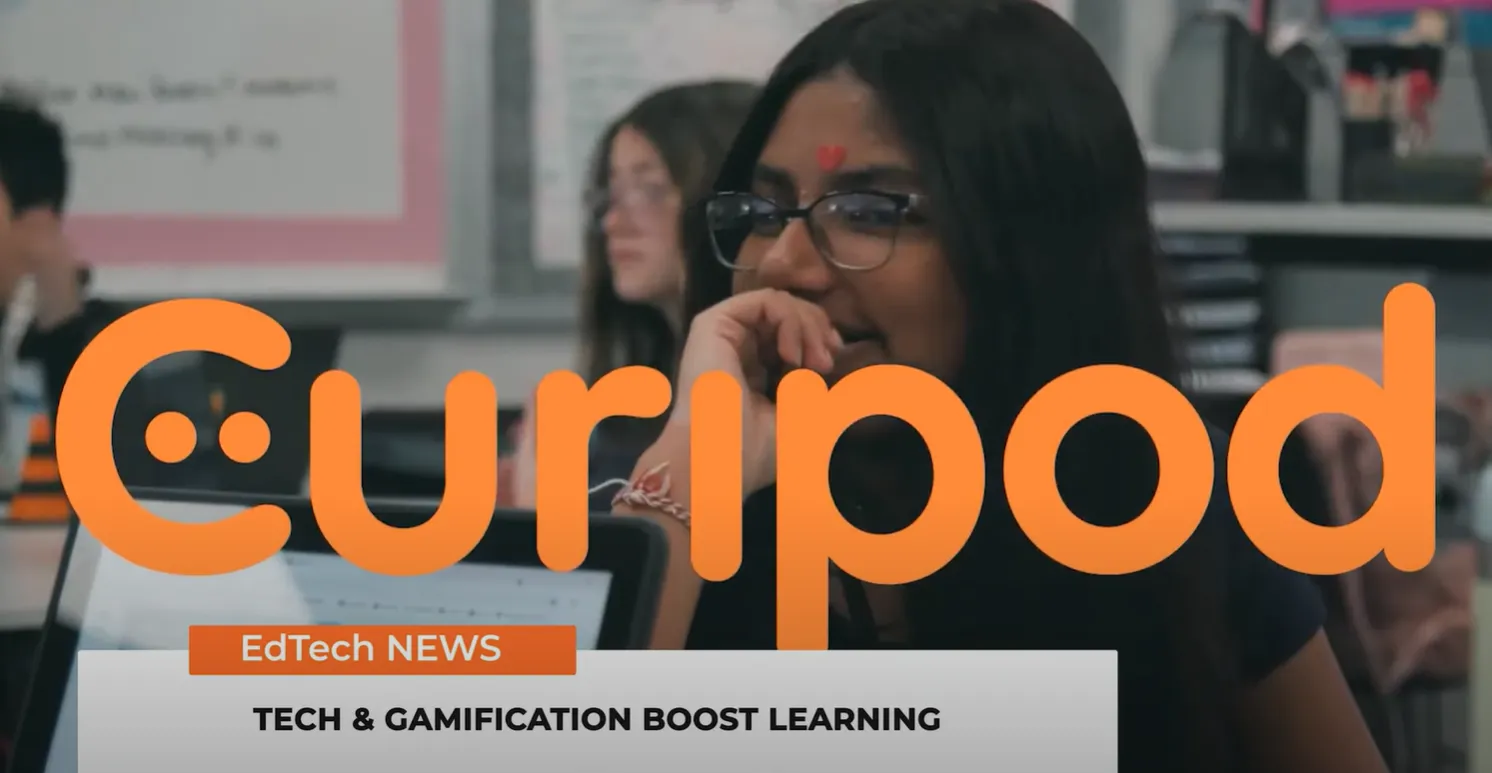
A biology teacher wants to explain how plants grow. She sets up a quiz in Kuripot:
“Where do plants usually get water from?”
Everyone answers, and she sees how the class thinks plants take water from the air. Then she can say:
“Okay, let’s talk about roots first.”
So what does this mean for children’s education?
- Teachers can spend more time directly with students instead of preparing materials.
- Lessons can be customized with AI data analysis.
- There is less paperwork, like writing reports or IEP documents.
Final thoughts
What do you think about the current state of education? Do people in your school or organization use modern teaching methods to reach their learning goals more effectively?
~ REMEMBER:
Educate yourself about technology.
One big challenge is making sure all schools have equal access to the technology, especially those in low-income areas. Teachers might struggle with learning how to use AI tools effectively without proper training and support. There are also serious concerns about student data privacy and how that information is stored or used. Some parents and educators worry that too much AI could take away from personal, human connections in the classroom. Plus, relying too much on tech might make it harder to spot when students are struggling emotionally or socially.
Here are the main ways AI can help with education:
- Personalized learning
- Intelligent tutoring systems
- Enhanced student engagement
- Adaptive learning
- Automated grading and feedback
- Task automation
- Ai personalises learning
- automating administrative tasks
- Chatbots for student support
- Curriculum improvement
- Administrative workflow
- Language acquisition
- Data privacy
- virtual assistants
AI can foster critical thinking by encouraging students to ask deeper questions through adaptive learning platforms that respond to their inputs with thought-provoking prompts. It can present multiple perspectives on a topic, pushing students to analyze and compare different viewpoints. AI-driven simulations and problem-solving tasks require learners to evaluate evidence, make decisions, and justify their reasoning. Tools like AI chatbots can guide students through Socratic questioning, promoting reflection and logical analysis. Lastly, AI can give immediate, personalized feedback that challenges assumptions and helps students refine their thinking

